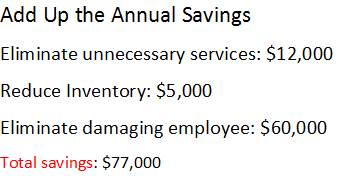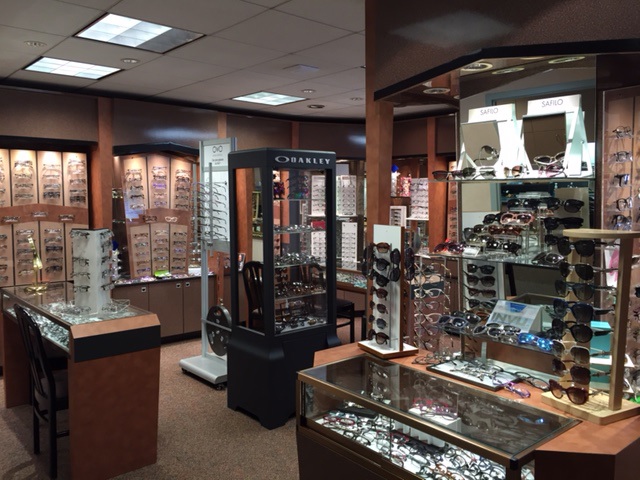By Aaron Neufeld, OD, FAAO

July 19, 2017
When I first took over my private practice from the previous owner, a practice valuator I hired for the initial purchase pointed out a red flag: Office expenses were higher than average. This launched my staff and I on a sleuthing journey that uncovered many unnecessary costs that the practice had accumulated throughout the years.
It is definitely worth looking into your monthly expenses, and seeing which ones you can do without, especially in more established practices. You may find many outlets that are leaking hard-earned money.
 Eliminate Unnecessary Services
Eliminate Unnecessary Services
We only have one practice web site, but were being charged by four separate companies for web site hosting. We streamlined, choosing just one to do all the work needed on our site.
We also eliminated a WiFi maintenance service, an over-priced window cleaning service and a printing press that was charging a huge amount for quarterly production of paper charts even though we had already switched to EHR a few years prior. Sifting through vendor (frames, contact lenses and ophthalmic accessories) invoices also revealed many extra costs that we were incurring, unknowingly. Those extra costs included credits owed to us on merchandise not being applied, excessive shipping costs and the ordering of products that we did not really need.
This process of “cleaning out” was daunting. It took many hours of my time and that of my support staff. The worst part about the process was not the time it took, but the monotony of looking through invoices and finding out what the culprits were.
Since most of these eliminations involved unneeded, or unnecessary items, the impact on patient experience was neutral.
A rough summation of all these costs was around $1,000 a month.
Yearly savings: $12,000.

The optical in Dr. Neufeld’s office. He recommends carefully scrutinizing your vendor invoices. You might be surprised how much things like excessive shipping charges are costing your practice.
Reduce Your Inventory
I remember walking into our storage room one day and seeing boxes of designer frames and 90-day-supply contact lens boxes. Then it hit me. All this extra inventory was doing us no good; in fact, it was hurting our cash flow. So, I had a meeting with my staff and opticians. We emptied out the storage room by returning, or selling off, the extra inventory. But it did not stop there.
In our optical, we had over 1,000 frames. We always prided ourselves on the great volume of designer frames in our high-end, boutique-style optical. However, there simply were too many frames for our patient volume. Certain lines were literally collecting dust due to lack of movement.
The truth is your optical can operate just fine with less inventory. Rarely will you see a patient walk out because you did not have one specific frame. The key to lightening frame inventory is to home in on which frames sell best, and organize your displays to convey abundance and sophistication to your target demographic. Lessening your inventory will provide you with much better cash flow. Many practitioners fear that whittling the inventory down will result in fewer sales, but if it is done with due diligence, that doesn’t happen.
The process of lessening our inventory was a long-term process. It took a significant amount of time for our opticians to decide which frames and lines to eliminate, and how to organize frames in our optical in the most effective way. But the opticians were in tune with the reasoning and goals behind this project, and had good spirits about it.
Lessening inventory resulted in thousands of dollars reinvested back into the practice. I would estimate roughly $1,500 was gained from returning contact lens stock, and another $3,000-$5,000 was gained from getting rid of frames.
Yearly savings: $5,000
Detox & Streamline Workforce
Take a good look at your staff. Don’t just look at their performance, or their production, but look at their attitude, their behavior and their motivation. Do they contribute to positive office synergy, or are they an invisible black hole, sucking the lifeblood out of your practice without you consciously realizing it?
It is typical, in a practice, to have an employee with a negative attitude. An employee with a chip on their shoulder can bring down the morale of doctors and support staff. Such an employee, even if they have a long tenure, must be let go.
This can throw an office into disarray. After we terminated an employee, our staff told me that we could never recover from the loss, and that we would face tough times. However, over the long run, the practice performance turned around, especially with key improvements in our medical billing process. We began to see better cash flow and a more synergistic staff.
The initial experience of having one less employee meant more work hours for the other staff members and me, which was a strain. But the benefits far outweighed the inconvenience.
When you factor in salary plus benefits, a poor-performing employee can cost a fortune. In addition to saving money, “weeding out” an under-performer can improve the practice atmosphere, making it more relaxed and on par with the upbeat, efficient practice culture we work toward.
If you feel that an individual working in your office is putting a strain on others, or is creating a toxic environment, let that employee go. It may be tough at first, but the long-term benefits will outweigh the short-term hardship.
Potential cost-savings of eliminating an employee, with salary and benefits: $60,000 annually.
Yearly savings: $60,000
 Aaron Neufeld, OD, is the owner of Los Altos Optometric Group in Los Altos, Calif. To contact: aneufeldod@gmail.com
Aaron Neufeld, OD, is the owner of Los Altos Optometric Group in Los Altos, Calif. To contact: aneufeldod@gmail.com



























